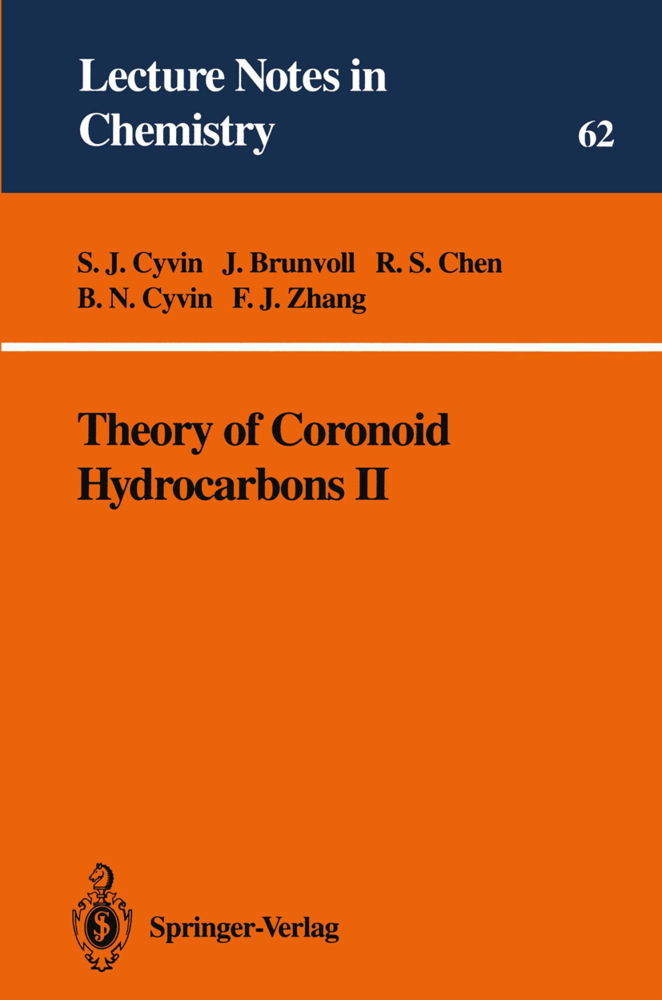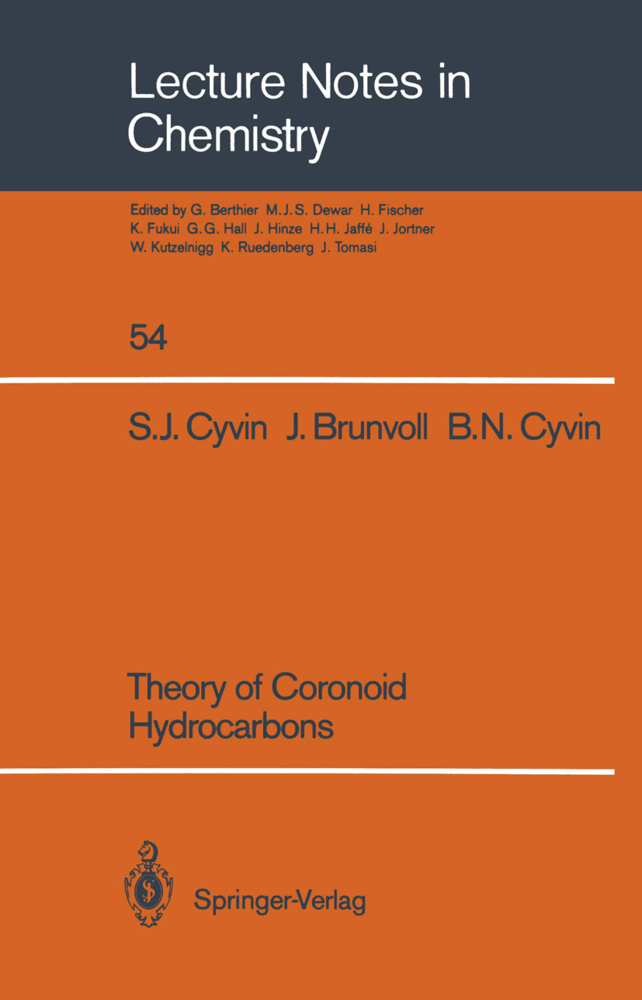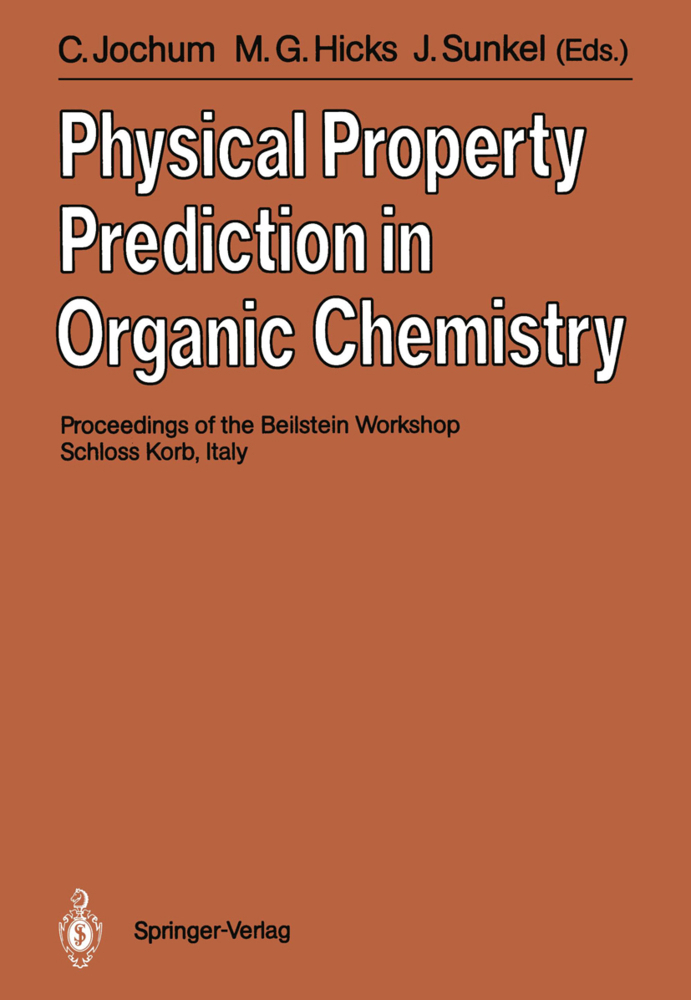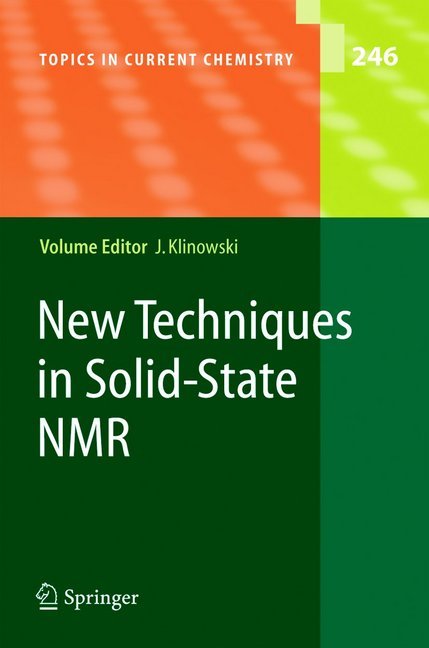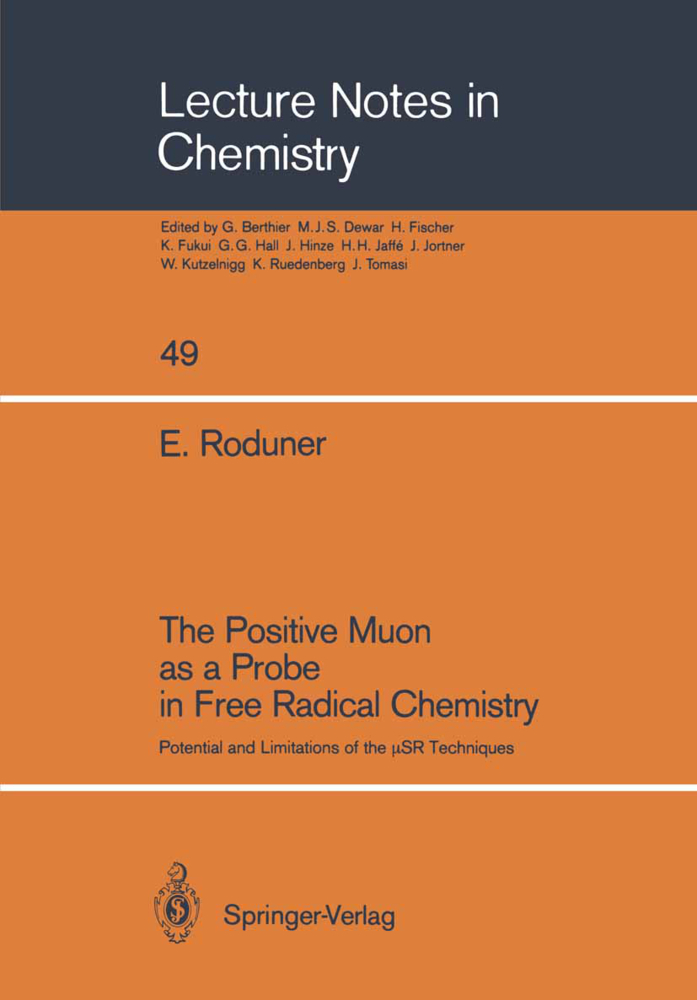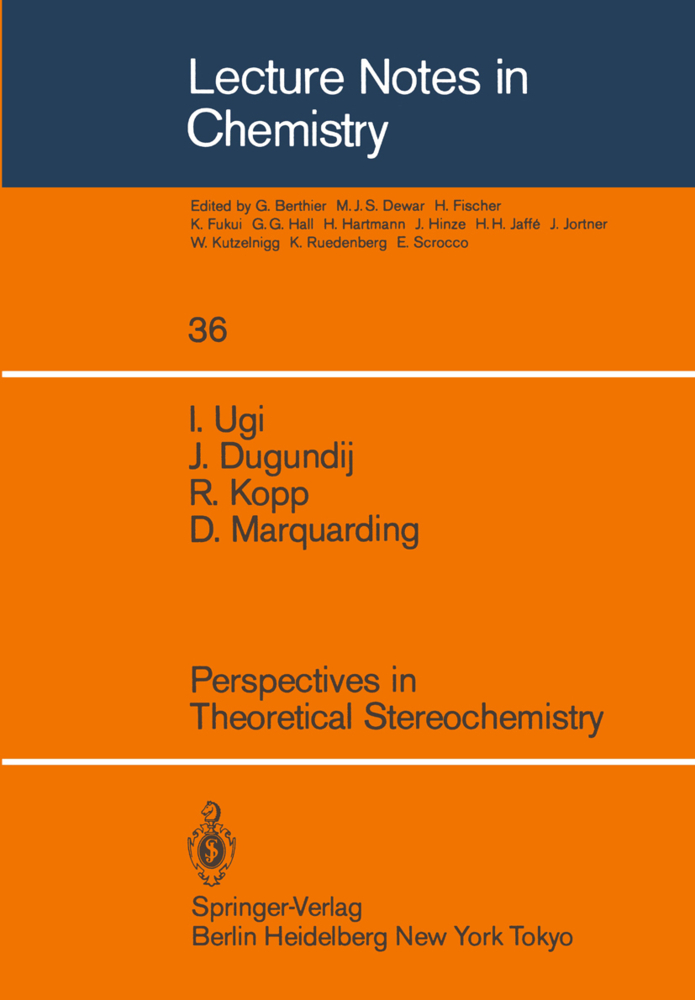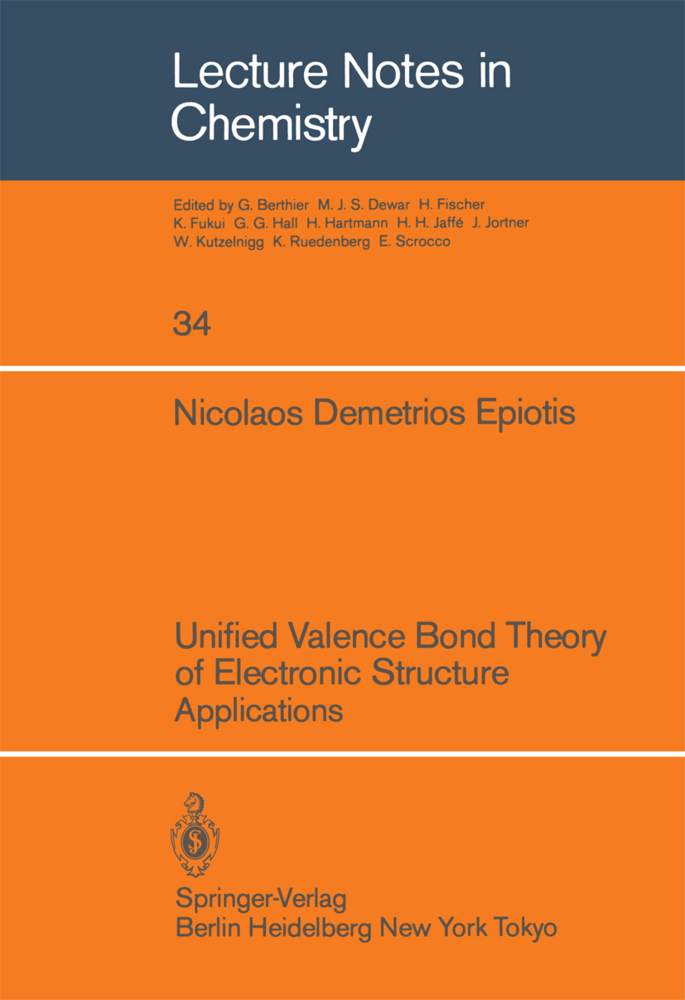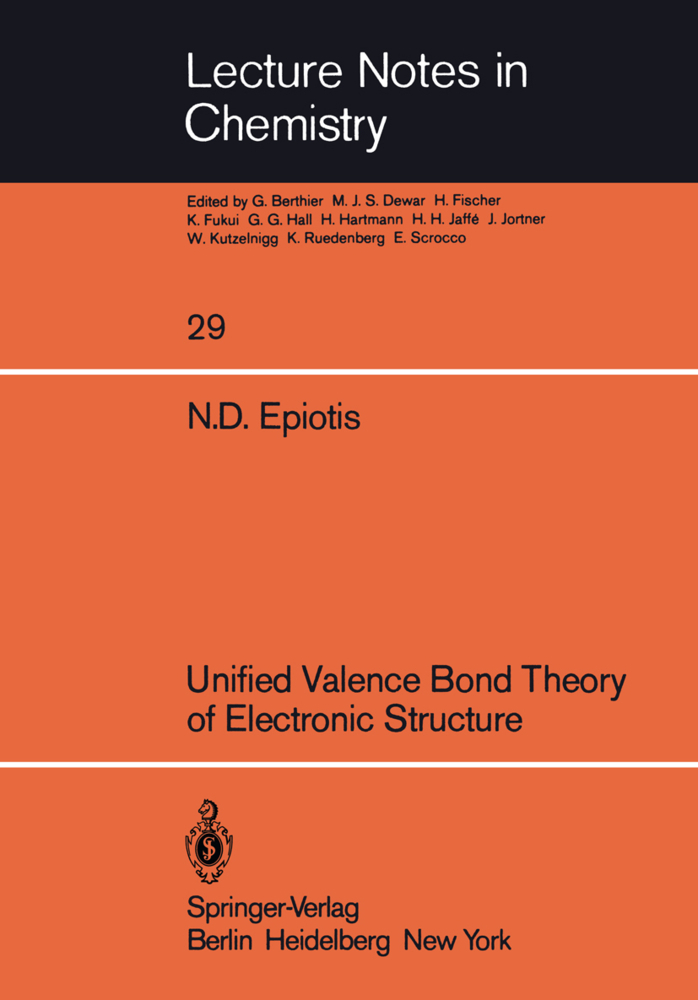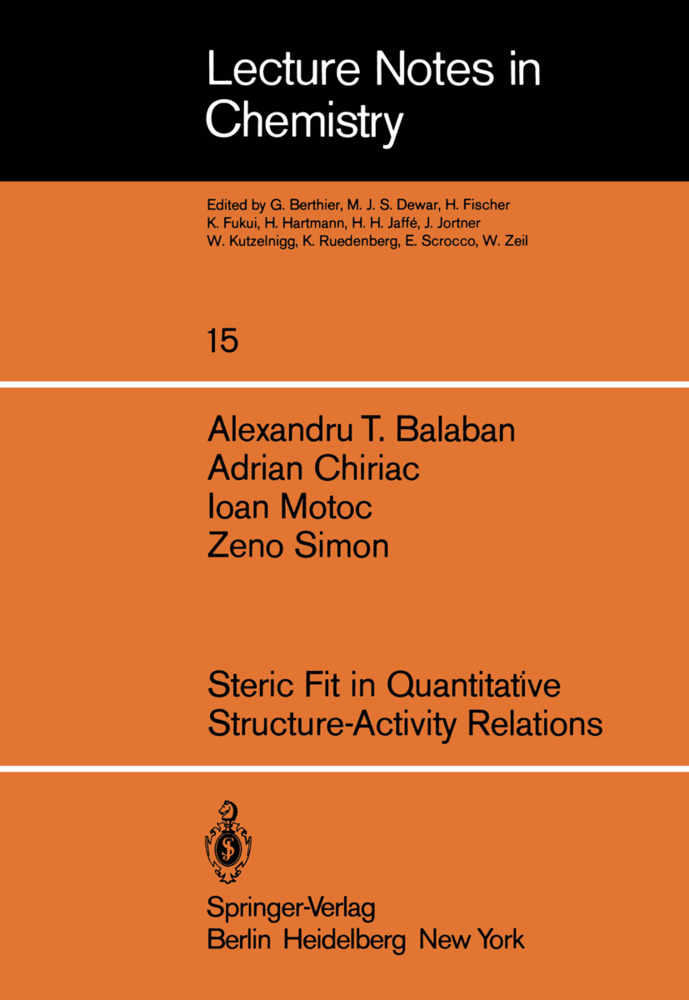Theory of Coronoid Hydrocarbons II
Theory of Coronoid Hydrocarbons II
The present monograph is a continuation of Cyvin SJ, Brunvoll J and Cyvin (1991c), a reference to be found in Bibliography. Naturally, the previous volume is cited frequently here. For the sake of brevity, it is referred to as "Volume I". References to different chapters, sections or paragraphs are given like Vol. 1-1, 1-1.2 or 1-1.2.2, respectively. Also tables and equations in "Volume I" are cited; the very last equation therein, for instance, is Vol. I-{9.9). The present text spans from references to organic syntheses or attempted organic syntheses - - to stringent mathematical theorems proved by graph-theoretical methods. Enumerations of coronoid systems is a substantial part of the work. Algebraic methods involving combinatorics and generating functions are employed on one hand, and computer programming on the other. The whole book is supposed to demonstrate a piece of mathematical chemistry, which can be characterized as lying on the "interfaces between mathematics, chemistry and computer science", a formulation used for the MATH/CHEM/COMP Conferences; d. Cyvin SJ, Brunvoll and Cyvin (1989d) in Bibliography. Financial support to BNC from the Norwegian Council for Science and the Humanities is gratefully acknowledged.
1.2 Motivation
1.3 Cycloarenes
1.4 Annulenes, Annulenoannulenes, and Annulene Derivatives
1.5 Antikekulene
1.6 Corannulene
1.7 Cyclacenes
1.8 Buckminsterfullerene
1.9 Nomenclature and Coding
1.10 Conclusion
2 - Classification of Polygonal Systems, and Some Aspects of KekulÉ Structures
2.1 Introduction
2.2 Classification of Single Coronoids in Relation to Kekulé Structures
2.3 Degenerate and Generalized Single Coronoids
2.4 Examples of Single Coronoids, and Their Kekulé Structure Counts
2.5 Survey of Kekulé Structure Counts for Single Coronoids
2.6 Isospectral Single Coronoids
2.7 Some Main Classes of Polyhexes
2.8 Examples of Graph-Theoretically Nonplanar Polyhexes
2.9 Polygonal Systems
3 - Benzenoids, Single Coronoids and Multiple Coronoids
3.1 General Considerations, Basic Definitions, and Terminology
3.2 Invariants and Relations Between Them
3.3 Additional Definitions, Terminology and Relations
3.4 First Enumeration Results for Benzenoids and Coronoids
3.5 Smallest Multiple Coronoids
3.6 Perfect and Imperfect Extremal Coronoids
3.7 Chemical Formulas
3.8 Numbers of Isomers
4 - Invariants of Single Coronoids
4.1 Introduction
4.2 Summary of Invariants and Relations Between Them
4.3 Maximum Number of Internal Vertices, and Minimum Number of Hexagons
4.4 Possible Values of Invariants
4.5 Upper and Lower Bounds for Some Invariants
4.6 Minimum Number of Vertices of Degree Two, and Maximum Number of Hexagons
5 - Chemical Formulas of Single Coronoids
5.1 Introduction
5.2 Terminology
5.3 Inequalities in Terms of the Formula Coefficients
5.4 Circumscribing and Excising
5.5 Extremal Single Coronoids and Some of TheirSubclasses
5.6 Extreme Single Coronoids
5.7 Table of Formulas
5.8 Single Coronoid Isomers and Number of Edges
6 - Further Studies of The Chemical Formulas of Single Coronoids
6.1 Introduction
6.2 Ground Forms and Higher Members
6.3 Formula Index
6.4 A Property of Circumscribing
6.5 Building-Up
Supplement
7 - Generation and Enumeration of Single Coronoid Isomers
7.1 Tabulation of Complete Data
7.2 Forms
7.3 Methods of Generation
7.4 Circular Single Coronoids
7.5 Circular Benzenoids Perforated by Phenalene Hole
7.6 Circular Benzenoids Perforated by Coronene Hole
7.7 Supplementary Enumeration Data
8 - Theorems for Single Coronoids
8.1 Introduction
8.2 Some Basic Concepts
8.3 A Property of Kekulé Structures
8.4 Essentially Disconnected Single Coronoids
8.5 Normal Single Coronoids
8.6 Regular Single Coronoids
8.7 Half Essentially Disconnected Single Coronoids
8.8 Kekuléan and Non-Kekuléan Single Coronoids.
1 - Introduction and Chemical Relevance
1.1 Reiteration1.2 Motivation
1.3 Cycloarenes
1.4 Annulenes, Annulenoannulenes, and Annulene Derivatives
1.5 Antikekulene
1.6 Corannulene
1.7 Cyclacenes
1.8 Buckminsterfullerene
1.9 Nomenclature and Coding
1.10 Conclusion
2 - Classification of Polygonal Systems, and Some Aspects of KekulÉ Structures
2.1 Introduction
2.2 Classification of Single Coronoids in Relation to Kekulé Structures
2.3 Degenerate and Generalized Single Coronoids
2.4 Examples of Single Coronoids, and Their Kekulé Structure Counts
2.5 Survey of Kekulé Structure Counts for Single Coronoids
2.6 Isospectral Single Coronoids
2.7 Some Main Classes of Polyhexes
2.8 Examples of Graph-Theoretically Nonplanar Polyhexes
2.9 Polygonal Systems
3 - Benzenoids, Single Coronoids and Multiple Coronoids
3.1 General Considerations, Basic Definitions, and Terminology
3.2 Invariants and Relations Between Them
3.3 Additional Definitions, Terminology and Relations
3.4 First Enumeration Results for Benzenoids and Coronoids
3.5 Smallest Multiple Coronoids
3.6 Perfect and Imperfect Extremal Coronoids
3.7 Chemical Formulas
3.8 Numbers of Isomers
4 - Invariants of Single Coronoids
4.1 Introduction
4.2 Summary of Invariants and Relations Between Them
4.3 Maximum Number of Internal Vertices, and Minimum Number of Hexagons
4.4 Possible Values of Invariants
4.5 Upper and Lower Bounds for Some Invariants
4.6 Minimum Number of Vertices of Degree Two, and Maximum Number of Hexagons
5 - Chemical Formulas of Single Coronoids
5.1 Introduction
5.2 Terminology
5.3 Inequalities in Terms of the Formula Coefficients
5.4 Circumscribing and Excising
5.5 Extremal Single Coronoids and Some of TheirSubclasses
5.6 Extreme Single Coronoids
5.7 Table of Formulas
5.8 Single Coronoid Isomers and Number of Edges
6 - Further Studies of The Chemical Formulas of Single Coronoids
6.1 Introduction
6.2 Ground Forms and Higher Members
6.3 Formula Index
6.4 A Property of Circumscribing
6.5 Building-Up
Supplement
7 - Generation and Enumeration of Single Coronoid Isomers
7.1 Tabulation of Complete Data
7.2 Forms
7.3 Methods of Generation
7.4 Circular Single Coronoids
7.5 Circular Benzenoids Perforated by Phenalene Hole
7.6 Circular Benzenoids Perforated by Coronene Hole
7.7 Supplementary Enumeration Data
8 - Theorems for Single Coronoids
8.1 Introduction
8.2 Some Basic Concepts
8.3 A Property of Kekulé Structures
8.4 Essentially Disconnected Single Coronoids
8.5 Normal Single Coronoids
8.6 Regular Single Coronoids
8.7 Half Essentially Disconnected Single Coronoids
8.8 Kekuléan and Non-Kekuléan Single Coronoids.
Cyvin, S.J.
Brunvoll, J.
Chen, R.S.
Cyvin, B.N.
Zhang, F.J.
| ISBN | 978-3-540-58138-3 |
|---|---|
| Artikelnummer | 9783540581383 |
| Medientyp | Buch |
| Auflage | Softcover reprint of the original 1st ed. 1994 |
| Copyrightjahr | 1994 |
| Verlag | Springer, Berlin |
| Umfang | XII, 300 Seiten |
| Abbildungen | XII, 300 p. 326 illus. |
| Sprache | Englisch |

